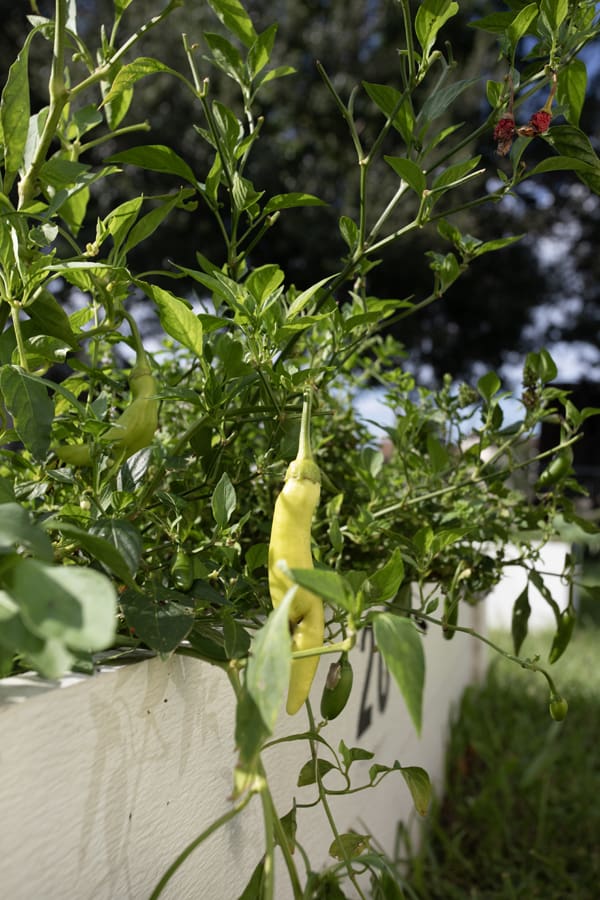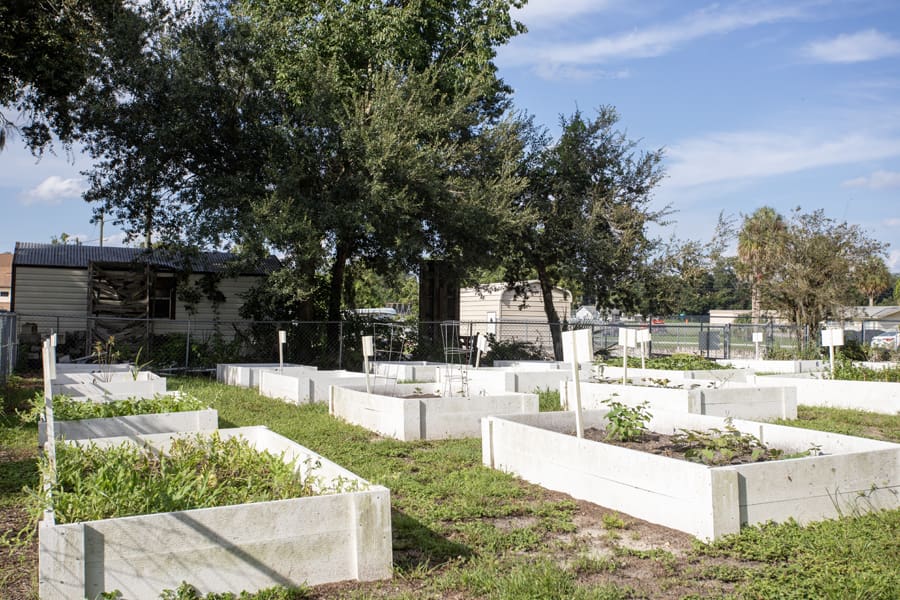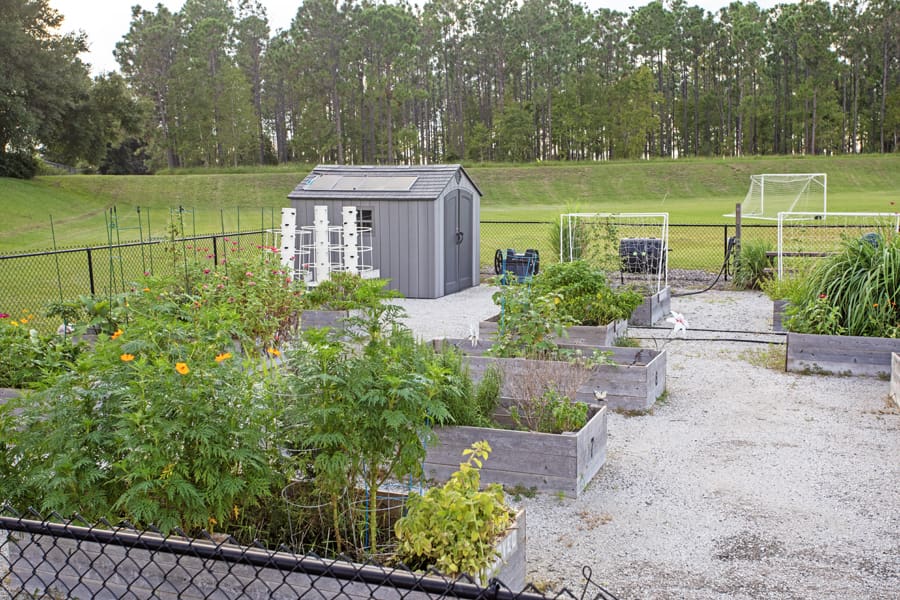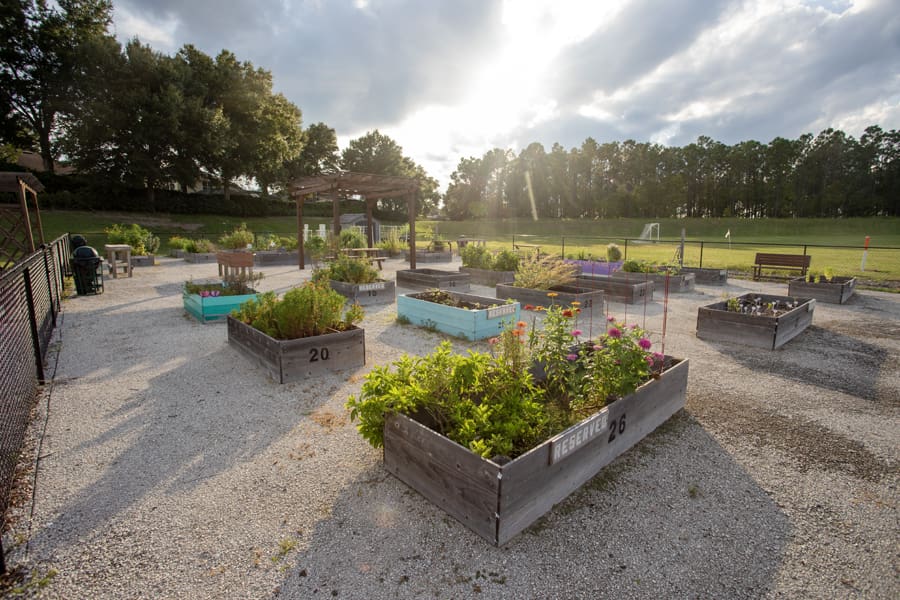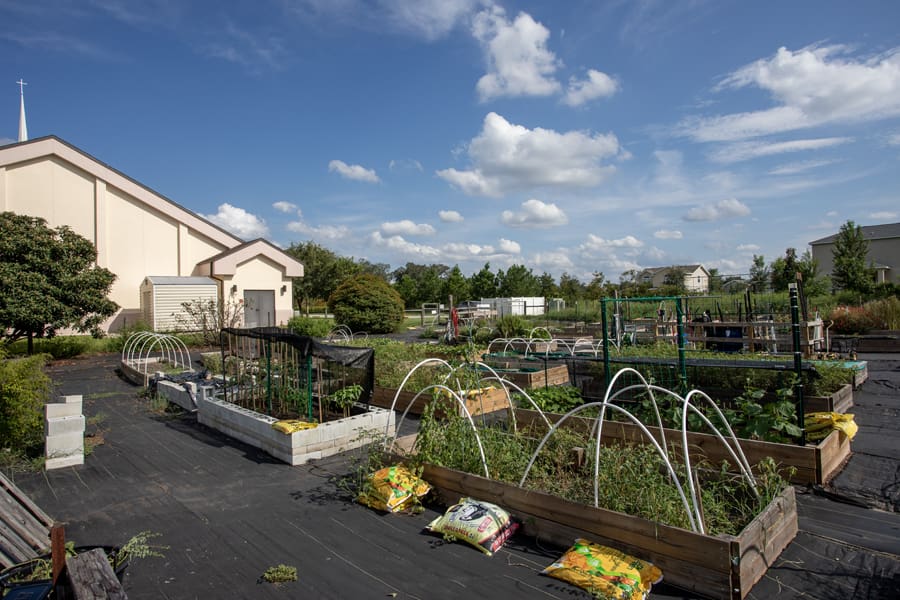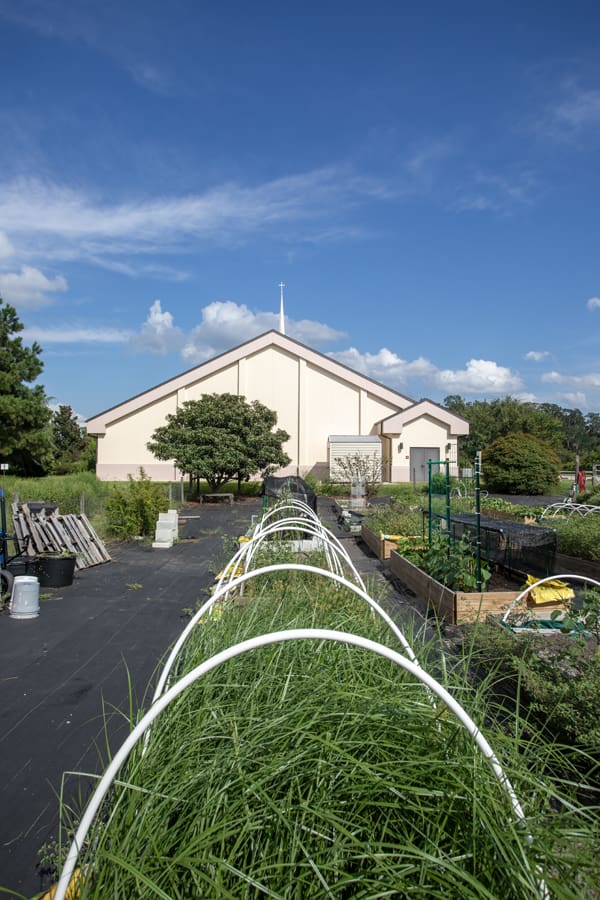February 2, 2025
Community Gardens Provide Fresh Produce, Optimism and Health Benefits

By Cynthia McFarland
Community Gardens Provide Fresh Produce, Optimism and Health Benefits

Grocery receipts don’t lie. Prices for food and beverages are 22.33% higher than in 2020, which is one reason behind the increased popularity of community gardens.
Simply put, your food dollar goes farther when you invest in a community garden.
According to the USDA, community gardens yield approximately $6 worth of produce for every $1 invested. Just 11 square feet in an average community garden yields approximately 20.4 servings of fresh produce.
And fresh fruits and vegetables are more flavorful.
Trying to convince your kids to eat more veggies? Data shows participants in community gardens eat 37.5% more fruits and vegetables than non-gardeners.
Still not sold on the benefits of a community garden? Consider this: Participating in a community garden lowers concerns about household food security while providing exercise and mental and physical health benefits. Research finds that community gardeners have lower BMIs and are less likely to be overweight than their neighbors.
Ready to turn some dirt? You don’t have to go far. Central Florida residents have multiple options when it comes to community gardens.
North Sumter County Community Garden
Ten years and still going strong
The North Sumter County Community Garden, launched in 2014, has helped participants grow for a decade now.
The garden, conveniently located behind the United Church of Christ at The Villages in Oxford, consists of 45 raised beds, most measuring three feet by 10 feet. There are usually 20 to 25 gardeners each season.
Beds are offered September through August. Large plots are $50 per year, while smaller plots run $35 per year. The fee includes plot use and access to water from the church. Each gardener is responsible for watering their own plots. Gardeners sign a contract to participate in work days scheduled a few times each year.
“The church lets us use the land and they’re on a well, so we pay the church a fee of $10 per plot for water use,” says chief steward/master gardener Chris Janis.
Chris is one of several experienced gardeners who’s happy to share advice with new participants on how to amend the soil and what to plant in the spring and fall growing seasons.
“There’s something very special about putting in the effort and getting the veggies and produce,” Chris says. “It can get very ‘Zen’ being outside, listening to the birds and hearing cow noises in the background. It’s very peaceful and rewarding.”
Visit the garden’s Facebook page to learn more at facebook.com/nsccgarden or call Chris directly at 617.750.3101.
Clermont Community Garden
No-fee organic garden
The Harvest of Hope Community Garden at Community United Methodist Church in Fruitland Park opened as a community outreach project in 2019 on the same property as the church and its food pantry.
There are 24 four-by-eight-foot raised beds for growing veggies and flowers. Since no chemicals are allowed, all gardening is organic.
“The church provides the garden beds and water. It’s up to each gardener to provide their seeds, plants and energy. There’s no fee to use the garden plots; the only cost is what people buy in plants and seeds. It’s a way to let people know God loves them and it’s nice for us to get to know our neighbors,” explains garden coordinator and church member Nancy Laraway, who has coordinated the garden since its inception.
Many people using the garden are food pantry clients. Some church members also have garden beds, but there’s no requirement to attend the church to participate. Gardeners bring their own tools and are responsible for maintaining and watering their beds.
“It’s fun for a family to have their kids see where the food comes from, and it’s helpful for supplementing the food they purchase,” says Nancy, adding that children are welcome with adult supervision. “It’s a fenced-in area, but gardeners can come anytime. There’s a screened lanai area if you want to take a break in the shade.”
Anyone interested in participating in the Harvest of Hope Community Garden should contact the church at 352.787.1829. https://www.facebook.com/communityumcfp/
Harvest of Hope Community Garden
Garden grown by grant
The 2-year-old Clermont Community Garden came about through a National Recreation and Park Association contest on park and community space revitalization.
“The City of Clermont applied for a grant sponsored by Niagara Bottling for proposed sites throughout the U.S. and we were accepted as one of the candidates. It was decided by vote, and we won a $90,000 grant,” explains Suzanne O’Shea, manager of the Clermont Arts and Recreation Center.
The 1/3-acre garden became a reality in January 2023. It offers 29 raised beds of varying sizes: three feet by six feet, three feet by eight feet and five feet by five feet. There’s even a two-by-six-foot wheelchair accessible bed. In addition to the garden plots and hydroponic towers, participants enjoy a butterfly garden, walking trail and pergolas with shaded sitting areas. The garden is open dawn to dusk seven days a week.
Gardeners pay $30 per bed for one year, January through December.
“It was absolutely amazing to get the grant funding to make this possible. We have a lot of new gardeners and people who don’t have green space. We see it as a great opportunity for the community,” Suzanne says.
Photos: Matthew Gaulin
"I fell in love with words early on and knew from fourth grade that I wanted to be a writer,” says Cynthia McFarland. A full-time freelancer since 1993 and the author of nine non-fiction books, her writing has earned regional and national awards. Cynthia lives on a small farm north of Ocala; her kids have fur and four legs


